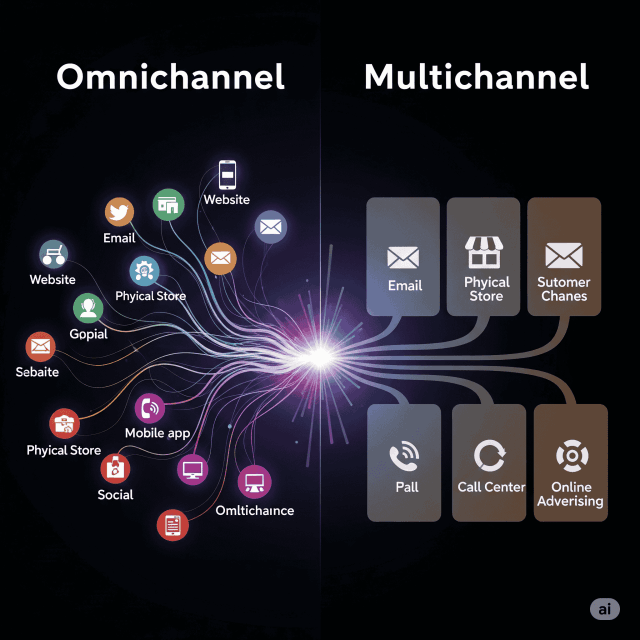In today’s fast-paced digital marketplace, businesses are constantly trying to meet the evolving needs of their customers. Two popular strategies that have emerged are omnichannel and multichannel approaches. While these terms often seem interchangeable, they represent distinct philosophies and methods for engaging customers. Understanding these differences is vital for any business looking to optimize customer experience and drive sales.
What is Multichannel?
Multichannel marketing refers to a strategy that utilizes multiple channels to reach customers. This can include traditional methods such as print advertising, as well as digital channels like social media, email, website, and brick-and-mortar stores. Each of these channels operates independently, and customers engage with them separately.
Benefits of Multichannel
- Wider Reach: By being present on various platforms, businesses can attract a broader audience and cater to different preferences.
- Targeted Marketing: Each channel can be tailored to suit the specific audience it attracts, allowing for targeted promotions and messaging.
- Increased Brand Awareness: Consistent branding across multiple channels can enhance visibility and reinforce brand messaging.
However, the lack of integration can lead to disjointed customer experiences. For instance, a customer might see a promotion in an email but find a different offer when visiting the website, leading to confusion and frustration.
What is Omnichannel?
Contrastingly, an omnichannel strategy takes multichannel a step further by providing a seamless and integrated experience across all channels. In an omnichannel environment, every touchpoint—be it online or offline—is interconnected, allowing customers to switch between channels without disruption.
Benefits of Omnichannel
- Unified Customer Experience: Customers can interact with the brand through multiple channels in a cohesive manner, whether they start by browsing on a mobile app, continue on a website, or finalize a purchase in-store. This seamless experience fosters loyalty.
- Better Customer Insights: An omnichannel approach allows for comprehensive data collection across channels, giving businesses deeper insights into customer behavior and preferences.
- Increased Customer Satisfaction: When customers have the flexibility to engage with a brand on their terms, they tend to be more satisfied, leading to improved retention and higher lifetime value.
- Consistent Messaging: Omnichannel strategies ensure that messaging and branding remain consistent, reducing confusion and reinforcing trust.
Key Differences
- Integration: The primary difference lies in integration. Multichannel interacts independently, while omnichannel focuses on a cohesive customer journey.
- Customer Experience: Multichannel approaches can lead to fragmented experiences, whereas omnichannel delivers a holistic experience.
- Data Utilization: Omnichannel strategies leverage data from all channels to inform tactics and strategies, while multichannel may only analyze performance on individual channels.
Choosing the Right Strategy
For businesses, the choice between multichannel and omnichannel will depend on their goals and resources. Smaller businesses may opt for a multichannel approach to keep things manageable, while larger organizations often benefit from the comprehensive insights and experiences provided by omnichannel strategies.
Conclusion
In summary, while both multichannel and omnichannel strategies have their place in modern marketing, the omnichannel approach stands out for its focus on creating a unified customer experience. Businesses seeking to enhance customer satisfaction, loyalty, and overall brand perception should consider embracing an omnichannel strategy that integrates all aspects of their operations. By understanding the key differences and benefits, organizations can more effectively cater to the evolving needs of their customers and thrive in a competitive marketplace.









